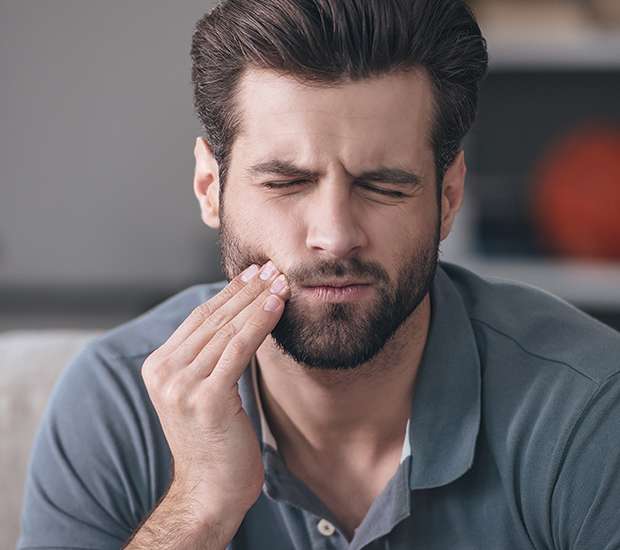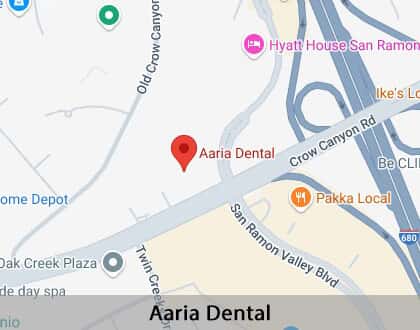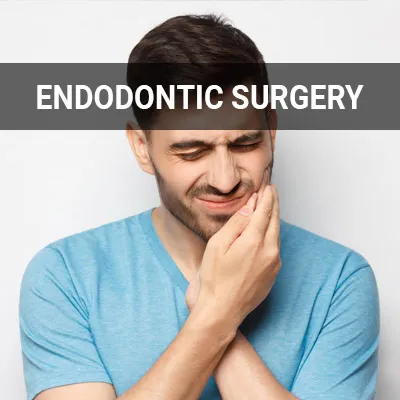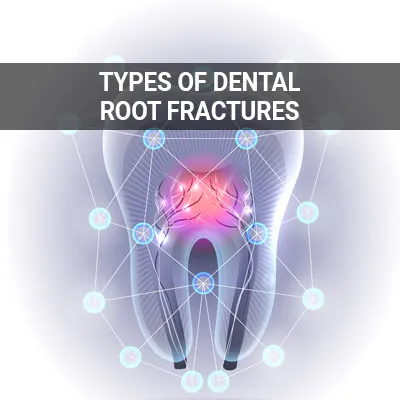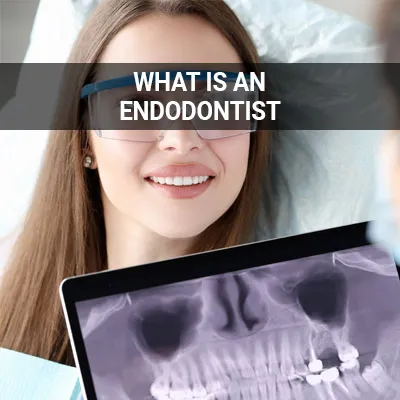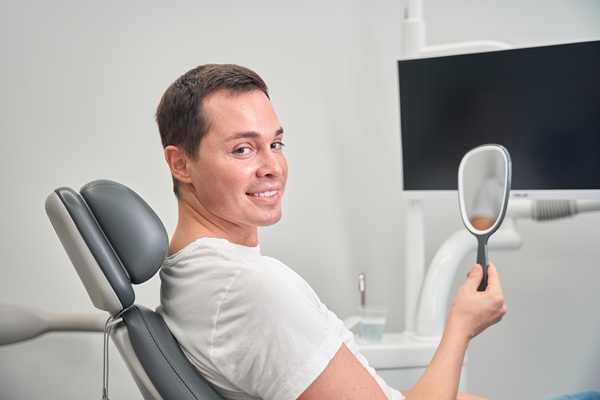Can a Cracked Tooth be Saved with a Root Canal and Crown San Ramon, CA
A cracked tooth is a serious problem that requires immediate attention. If not properly treated, it may have adverse effects on one's health. Fortunately, root canals and crowns may help treat severe cases of cracked teeth.
Root canals and crowns are available at Aaria Dental in San Ramon and the surrounding area. We may be able to help save your cracked tooth. Call us today at (925) 967-2444 to schedule an appointment and learn more.
Symptoms of a Cracked Tooth
There are five kinds of cracked teeth: craze lines, fractured cusps, cracks extending into the gum line, split teeth, and vertical root fractures. Each type of cracked tooth shows different symptoms. Craze lines have tiny, painless cracks in the teeth enamel, and they typically do not require any treatment. Fractured cusps usually occur around dental fillings without affecting the tooth's pulp, and they are generally painless. Usually, teeth with cracks that have reached the gum line require immediate extraction; however, they may still be salvageable if the crack has yet to reach the gum line.
Split teeth have cracks extending from the surface to below the gum line and can typically be separated into at least two segments. Such teeth generally cannot be saved as a whole. Teeth with vertical root fractures have cracks that begin from below the gum line and extend upwards. With all types of cracked teeth, patients may experience pain when chewing or biting, tooth sensitivity, swelling of the gum around the affected tooth, and intermittent pain.
“With all types of cracked teeth, patients may experience pain when chewing or biting, tooth sensitivity, swelling of the gum around the affected tooth, and intermittent pain.”
Cracked Tooth Syndrome (CTS)
Cracked tooth syndrome, abbreviated to CTS for short, is a condition in which a patient has a crack in their tooth that is too small to be seen on an X-ray. Alternatively, the patient's tooth may have a crack that is difficult to locate due to it being under the gum. CTS most commonly affects molars, and its most common symptoms include tooth sensitivity and pain or discomfort when biting down. CTS pain is unlike cavity pain in that it is not persistent; instead, it comes and goes intermittently.
There is no singular cause of CTS. However, specific populations may be more prone to CTS than others. Patients with malocclusions that cause them to put excess pressure on one tooth, patients who grind or clench their teeth, patients with large fillings, or patients who have undergone root canal treatment are all more likely to have CTS than their counterparts. Furthermore, as CTS is also one of the most challenging dental problems to diagnose, patients may experience unexplained symptoms for months.
“…as CTS is also one of the most challenging dental problems to diagnose, patients may experience unexplained symptoms for months.”
Cracked Teeth & Root Canals
As stated by MedicalNewsToday, the best treatment method for a cracked tooth is dependent on its location and the extent of its damage. Some, like teeth with tiny cracks that do not cause any pain or discomfort, may be minor enough to not require treatment. Minor treatment options include glue, plastic resin (also known as bonding), fillings, or crowns. For more severe cases, root canal treatment may be necessary.
During a root canal procedure, the endodontist removes any infected or inflamed pulp. They then clean and shape the inside of the root canal before filling it. Afterward, a crown is placed on the tooth's cap to protect and fully restore its functionality. Once restored, the treated tooth will continue to function as any other natural tooth.
“… the best treatment method for a cracked tooth is dependent on its location and the extent of its damage.”
Check out what others are saying about our dental services on Yelp: Can a Cracked Tooth be Saved with a Root Canal and Crown in San Ramon, CA
When a Cracked Tooth Is Beyond Repair
Cracked teeth that are not treated in time may eventually cause pulp necrosis, a condition in which the tissue inside the teeth dies. This may set off a domino effect of disastrous effects on one's oral and overall health, including total teeth loss. Teeth may be totally beyond repair if the crack extends below the gum line. At that point, tooth extraction will become the only viable option.
Though today's tooth replacement options are better than ever, it is still best to save a natural tooth whenever possible. Accordingly, patients should seek endodontic help as soon as they suspect they may have a cracked tooth. Early detection is critical for proper and effective treatment, and endodontic surgery may be adequate for more severe cases. Aaria Dental can help determine what is best for each patient on a case-by-case basis.
“Early detection is critical for proper and effective treatment, and endodontic surgery may be adequate for more severe cases.”
Questions Answered on This Page
Q. Am I at risk for cracked tooth syndrome (CTS)?
Q. How can a root canal help save my cracked tooth?
Q. What if a crown or root canal cannot save my cracked tooth?
Q. What are the post-care instructions?
People Also Ask
Q. Do I need a root canal procedure?
Q. What is the difference between endodontists and dentists?
Post-Care Instructions
After the cracked tooth gets fixed, patients will need to continue regular dental checkups and practice good oral hygiene with regular brushing and flossing. This is true whether the tooth got fixed via a root canal or crown. Root canals have a very high success rate, and many teeth fixed using this procedure can last a lifetime. Unlike broken bones, a crack in a tooth will never completely heal, so if patients start to experience any discomfort, it is time to make an appointment to see our dentist.
“After the cracked tooth gets fixed, either through a root canal treatment or with a crown, patients will need to continue regular dental checkups and practice good oral hygiene with regular brushing and flossing.”
Frequently Asked Questions
Q. How do I know if I have a cracked tooth?
A. A cracked tooth mimics the symptoms of many other dental issues. However, you may experience discomfort when you bite down or be sensitive to hot and cold foods. Do not ignore these symptoms. The sooner a cracked tooth is diagnosed and treated, the better.
Q. What can I do to keep my teeth from cracking?
A. It is difficult to avoid cracked teeth; still, you can do some things to reduce your chances. Do not chew on hard objects like ice or pens, look into a mouthguard if you clench or grind your teeth, and wear a mouthguard while playing contact sports.
Q. Could I have cracked tooth syndrome (CTS)?
A. Cracked tooth syndrome is when the crack on the tooth is not detected on an X-ray or resides under the gums. Since the crack is hard to see, many people may suffer for months before seeking help. Our dentist will utilize many different methods to help diagnose CTS.
Q. Why does a cracked tooth hurt?
A. Inside the tooth is a soft connective tissue called the pulp. This pulp contains cells, blood vessels, and nerves. Pulp may become irritated when the outer hard tissues of the tooth are cracked and chewing causes movement of the broken pieces.
Dental Terminology
Helpful Related Links
- American Dental Association (ADA). Glossary of Dental Clinical Terms. 2025
- American Academy of Cosmetic Dentistry® (AACD). Home Page. 2025
- WebMD. WebMD’s Oral Care Guide. 2025
About our business and website security
- Aaria Dental was established in 2023.
- We accept the following payment methods: American Express, Cash, Check, Discover, MasterCard, and Visa
- We serve patients from the following counties: Contra Costa County
- We serve patients from the following cities: San Ramon, Norris Canyon, Danville, Blackhawk, and Dublin
- Norton Safe Web. View Details
- Trend Micro Site Safety Center. View Details
Back to top of Can a Cracked Tooth be Saved with a Root Canal and Crown
QR code for Can a Cracked Tooth be Saved with a Root Canal and Crown
